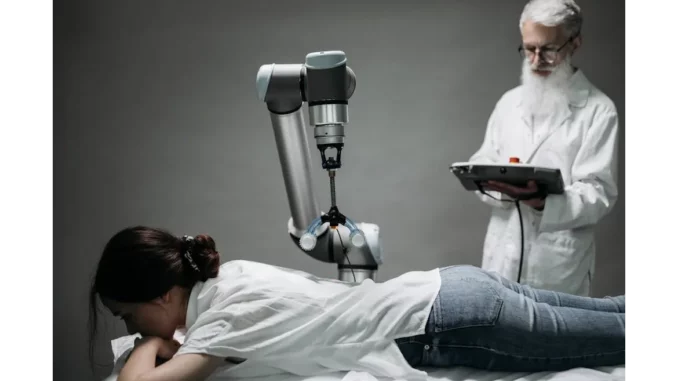
The microfluidics market, projected to achieve an impressive valuation of USD 92.43 billion by 2032, is on a swift trajectory of growth, largely propelled by significant advancements in diagnostics, personalised medicine, and the integration of artificial intelligence (AI). This dynamic field is not only transforming healthcare diagnostics but is also making notable strides across various other industries. As we delve deeper into the elements driving this market forward, it becomes evident that microfluidics is set to revolutionise both medical and non-medical sectors.
Microfluidics, often dubbed lab-on-a-chip technology, is revolutionising diagnostics by providing rapid, cost-effective, and highly sensitive testing solutions. In 2023, the diagnostic and medical laboratories market in the United States was valued at USD 79.4 billion, highlighting the enormous potential for microfluidic advancements. These devices facilitate point-of-care testing, enabling immediate diagnosis and treatment—an essential capability in managing chronic diseases such as diabetes, cardiovascular conditions, and cancer. As the global burden of chronic diseases continues to rise, the demand for efficient diagnostic tools has become more pressing. Microfluidics offers a platform for minimally invasive tests capable of early disease detection, thereby facilitating timely interventions and personalised treatment plans. This shift towards personalised medicine is further bolstered by the integration of AI, which enhances the precision and efficiency of diagnostic processes.
AI and machine learning integration into microfluidic devices is a pivotal driver of the market’s growth. These technologies enable sophisticated data analysis and automation, improving the accuracy and speed of diagnostics. AI algorithms can process complex data sets generated by microfluidic devices, offering valuable insights into disease patterns and treatment efficacy. The synergy between microfluidics and AI is paving the way for more personalised and targeted healthcare solutions, substantially reducing the time and cost associated with drug discovery and development. This combination of technologies is not only streamlining healthcare processes but also facilitating the creation of tailored treatments that cater to individual genetic and physiological profiles.
Beyond healthcare, the applications of microfluidics stretch into diverse fields such as environmental monitoring, food safety testing, and wearable health devices. In environmental science, microfluidics provides real-time pollutant detection, serving as a critical tool in addressing environmental challenges. Similarly, in the food industry, microfluidic devices ensure food safety by swiftly identifying contaminants and pathogens, thus safeguarding public health. Wearable health devices represent another burgeoning market segment leveraging microfluidic technology. These devices enable continuous monitoring of physiological parameters in real-time, empowering individuals to take proactive measures in managing their health. The integration of microfluidics into digital health platforms is enhancing the accessibility and usability of these technologies, driving their adoption across diverse user groups.
Geographically, North America currently leads the microfluidics market, propelled by a robust healthcare infrastructure, substantial R&D investments, and the presence of key industry players. However, the Asia-Pacific region is anticipated to witness the highest growth rate, spurred by improvements in healthcare infrastructure, increasing biotechnology investments, and a growing demand for affordable healthcare solutions. As we look to the future, the microfluidics market is poised to expand its reach, driven by continuous technological advancements and increasing applications across various sectors. The development of new materials and fabrication techniques will further enhance the performance and affordability of microfluidic devices, making them accessible to a broader audience.
As the microfluidics market continues to evolve, it stands at the forefront of a technological revolution, offering innovative solutions to some of the most pressing challenges in healthcare and beyond. The convergence of diagnostics, personalised medicine, and AI is advancing, positioning microfluidics as a pivotal player in shaping the future of these fields. By enabling precise control and manipulation of fluids at the microscale, microfluidics is unlocking new possibilities for research, diagnostics, and treatment, ultimately improving outcomes and enhancing quality of life across the globe. This burgeoning field is not only reshaping the landscape of healthcare diagnostics but also making significant inroads into various other industries, heralding a new era of technological advancement and innovation.


Be the first to comment